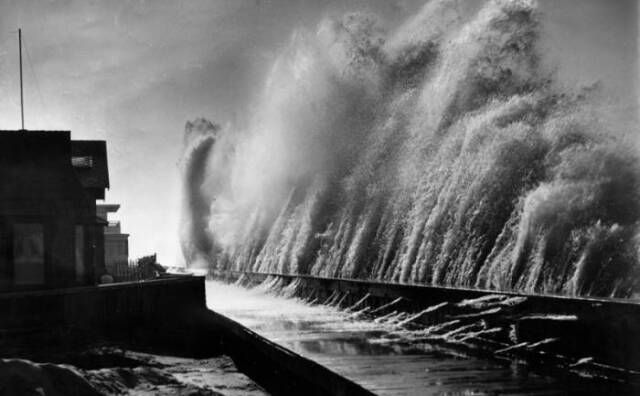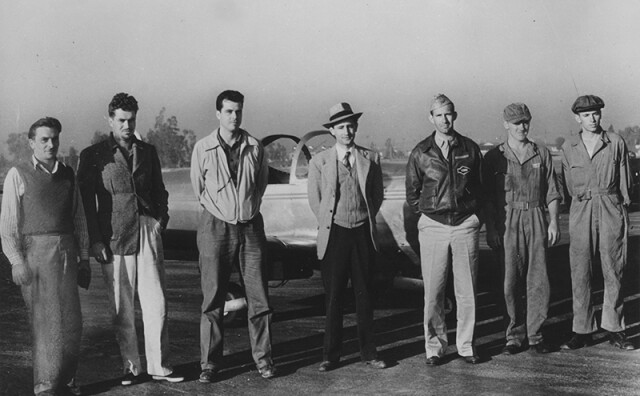What Makes Pasadena’s ‘Bungalow Courts’ So Special? A Fan Of Historic Places Explains

The National Register of Historic Places is the official list of what the federal government considers "historic places worthy of preservation.”
Of the more than 98,000 locations on the register, about 600 of them are in Los Angeles County. And of those locations in L.A., about 30 of them are “bungalow courts” in the city of Pasadena.
To learn more about what bungalow courts are and why they occupy so much real estate on the National Register, LAist’s How To LA team turned to Etan Rosenbloom, the self-described “owner, blogger, founder, writer, social mediator, and occasional trespasser for Etan Does LA.
Etan Does LA is a social media project Rosenbloom began during the pandemic, bringing followers along on his quest to go to all 600 spots on the National Register in L.A.
It started with a bike ride to the Portal of the Folded Wings Shrine to Aviation in Burbank. It’s a massive, ornate monument and gravesite of leaders in the field of aviation.
“I was so blown away and I noticed it was on the National Register of Historic Places and I was like, ‘If I've never heard of this thing after 40 years of living in Los Angeles, what else could be on the National Register that I need to know about?’”
One of those things (or, actually, many of those things) was bungalow courts.
What are bungalow courts?
Bungalow courts are multi-family housing structures made up of small one-story houses or duplexes, usually all facing a shared courtyard. Pasadena is considered their birthplace.
The courts come in all different architectural styles, “but the whole point is that there is some kind of central area that's communal space,” Rosenbloom says.
“So you have this combination of detached units, which give a sense of privacy, like a single-family home. But then there's also communal living, which gives you more security, a sense of community, [and] all that stuff.”
(A fun fact: Bungalow courts were the precursors to motels. The first motel was built in 1925 in San Luis Obispo by an architect who’d built an early bungalow court, and other homes, in Pasadena.)
How did Gartz Court gain historic status?
Gartz Court is the oldest bungalow court in Pasadena, but where it is today is actually 2 miles away from its original location. In the early 1980s, a construction company bought the court, evicted the tenants and planned to flatten the complex to build an expansion of their offices.

The city of Pasadena, along with a historic preservation organization called Pasadena Heritage, launched an effort in 1982 to save the court from demolition. It gained its status on the National Register of Historic Places the following year (despite initial opposition from the owners). An agreement was reached to move the bungalows to a new location, and through different forms of funding — grants and donations — the bungalows were saved.
The units were all moved on trucks in the middle of the night to their current location on Pasadena Avenue in 1984.
If you visit the bungalows today (be mindful, there are residents living there), you will find a plaque from the city of Pasadena noting its historic status.
Why are there so many bungalow courts on the National Register?
The height of the “bungalow craze” was from 1910 to about 1930. After that, because of new mandates about parking, “it became no longer economically feasible to build something like this, with this few people living on it, with the number of parking spots that were required by the city,” Rosenbloom says.
And as result of that, a lot of bungalow courts began being torn down to make room for larger apartment buildings. Or in other cases, for freeways. And we know where the L.A. story goes with cars…
Today, there are about 100 bungalow courts left in Pasadena, 30 of which are on the National Register.
How does the National Register work?
“When you think of something like the National Register,” Rosenbloom says. “You probably think there's some governmental body in Washington that’s saying,‘You, you, and you — you're all on the National Register.’ And it's not like that at all.”

In order to get on the national register, Rosenbloom says, a location really needs a “champion.” That’s a person or an organization that’s willing to put in all the time and effort and do all the paperwork necessary to apply to get something on the list.
“That’s great,” Rosenbloom says, “but it also means there are some strange omissions, like buildings you'd think would be on the National Register that aren't.”
Rosenbloom’s go-to example is the iconic Griffith Observatory.
While that doesn’t seem to make sense that it wouldn’t be on the list, Rosenbloom says, “there are all kinds of reasons why something might not end up on the National Register. It could be that the owner objects, or the owner doesn't see the point, or it's famous enough that it doesn't need any kind of protection that the National Register might give it.”
Once a property is on the National Register, it becomes a lot harder to tear down or make significant changes to it.
Other spots on the National Register to check out in L.A.
Etan has so far been to about 230 of the locations on the National Register in L.A. A couple of his favorites are:
- Anything designed by architect John Lautner: “He's really known for these experimental houses with soaring concrete ceilings, interesting use of wood and space, and sort of blurring the line between inside and outside. You've probably seen some of his houses — they've been used in Body Double and The Big Lebowski and one of the Lethal Weapon movies.”
- The Saddle Rock Pictograph Site: “It's on a private wine ranch, but the Chumash Native Americans painted some of the most important art in the entire L.A. area in a cave that's sort of in the center of this ranch.”
-
Restored with care, the 120-year-old movie theater is now ready for its closeup.
-
Councilmember Traci Park, who introduced the motion, said if the council failed to act on Friday, the home could be lost as early as the afternoon.
-
Hurricane Hilary is poised to dump several inches of rain on L.A. this weekend. It could also go down in history as the first tropical storm to make landfall here since 1939.
-
Shop owners got 30-day notices to vacate this week but said the new owners reached out to extend that another 30 days. This comes after its weekly swap meet permanently shut down earlier this month.
-
A local history about the extraordinary lives of a generation of female daredevils.
-
LAist's new podcast LA Made: Blood Sweat & Rockets explores the history of Pasadena's Jet Propulsion Lab, co-founder Jack Parsons' interest in the occult and the creepy local lore of Devil's Gate Dam.






